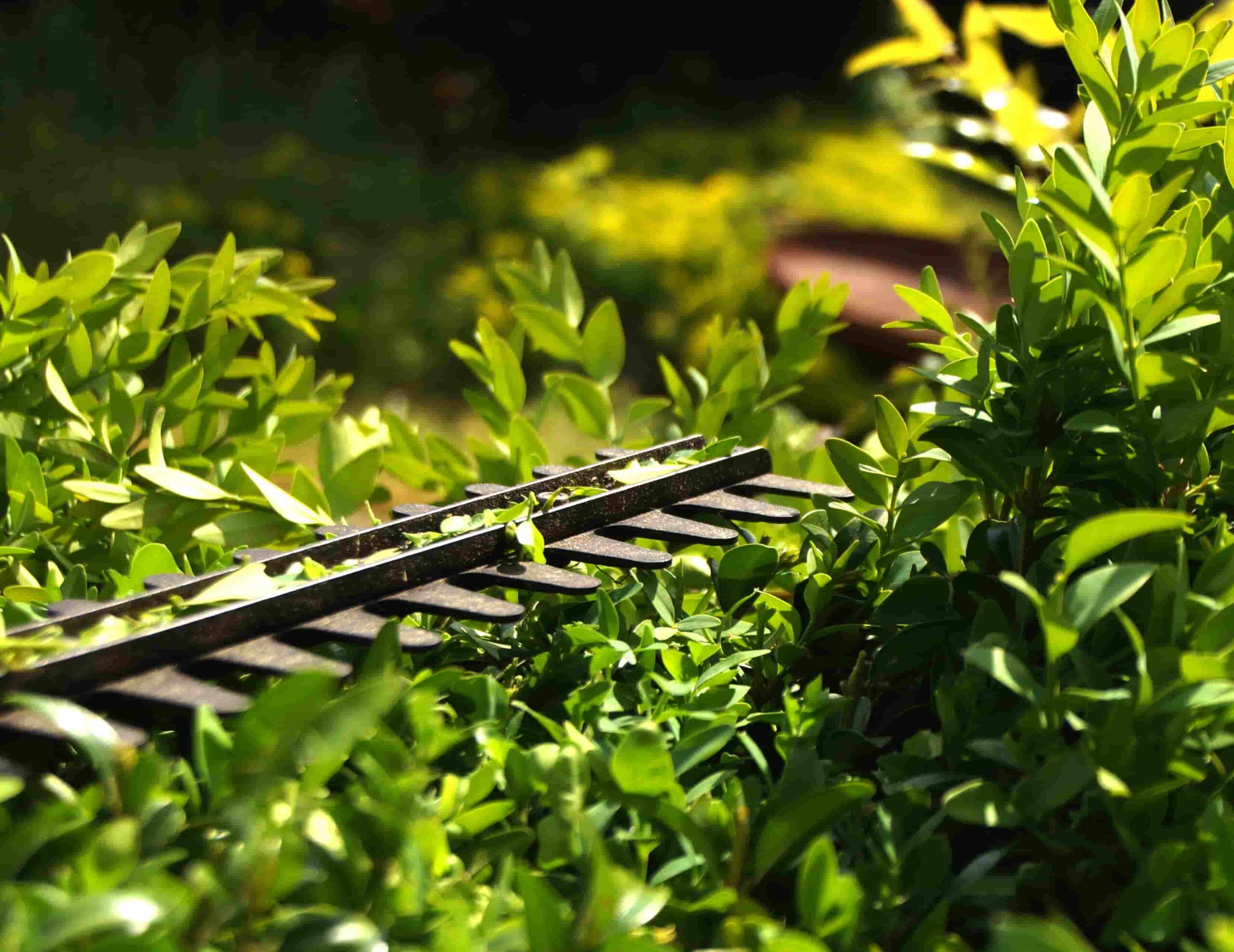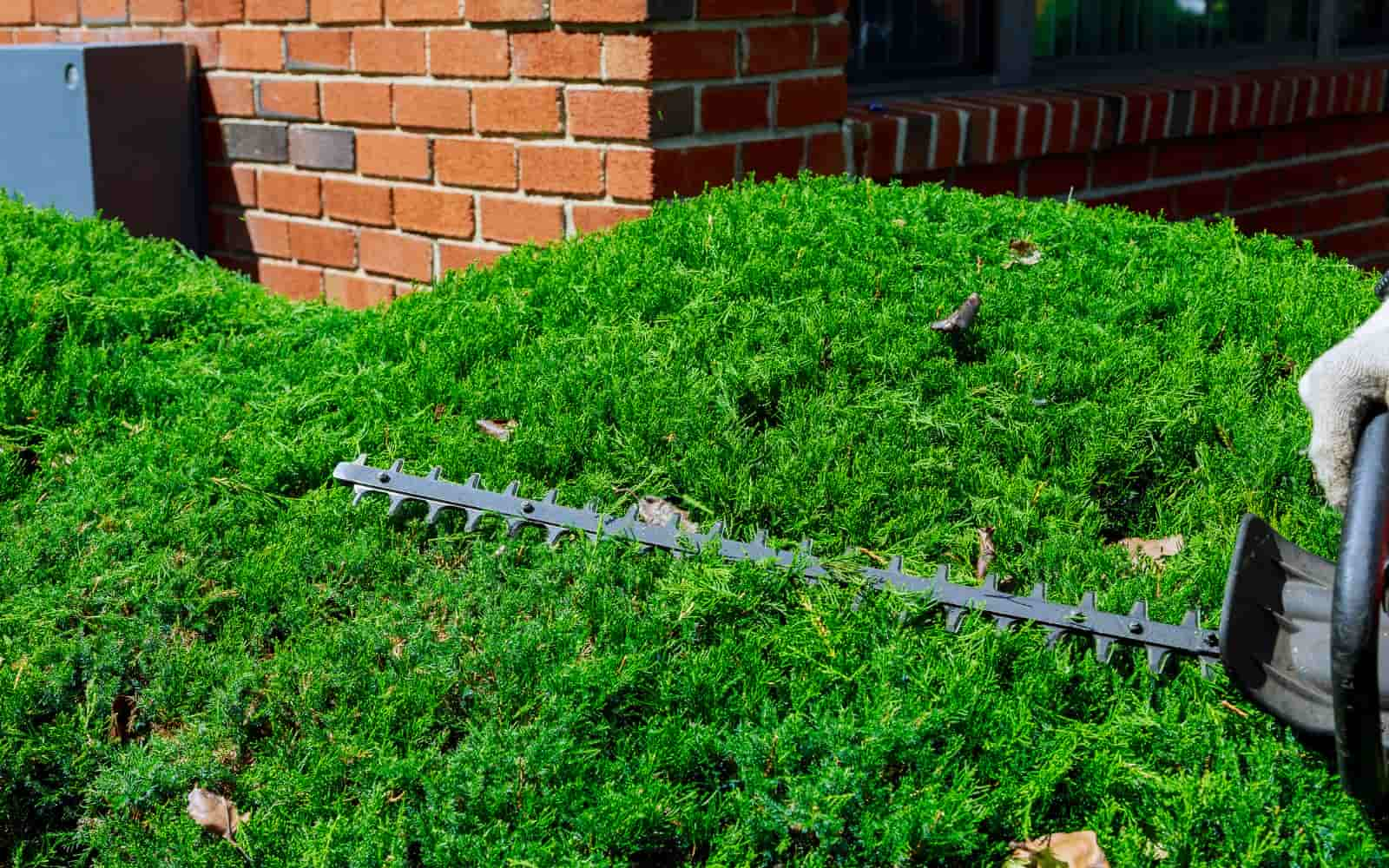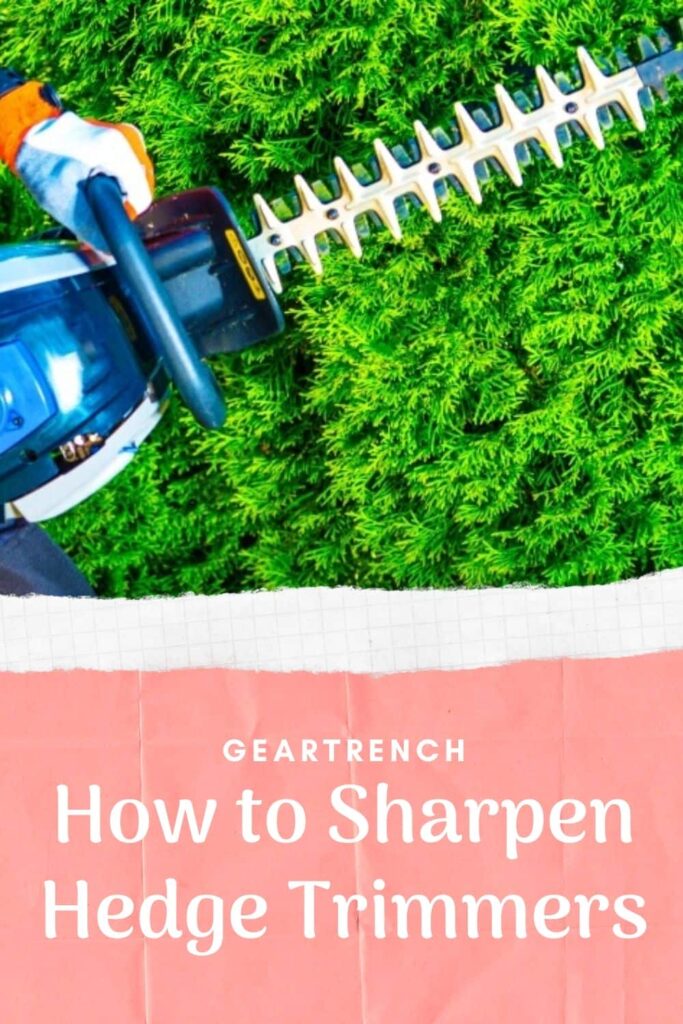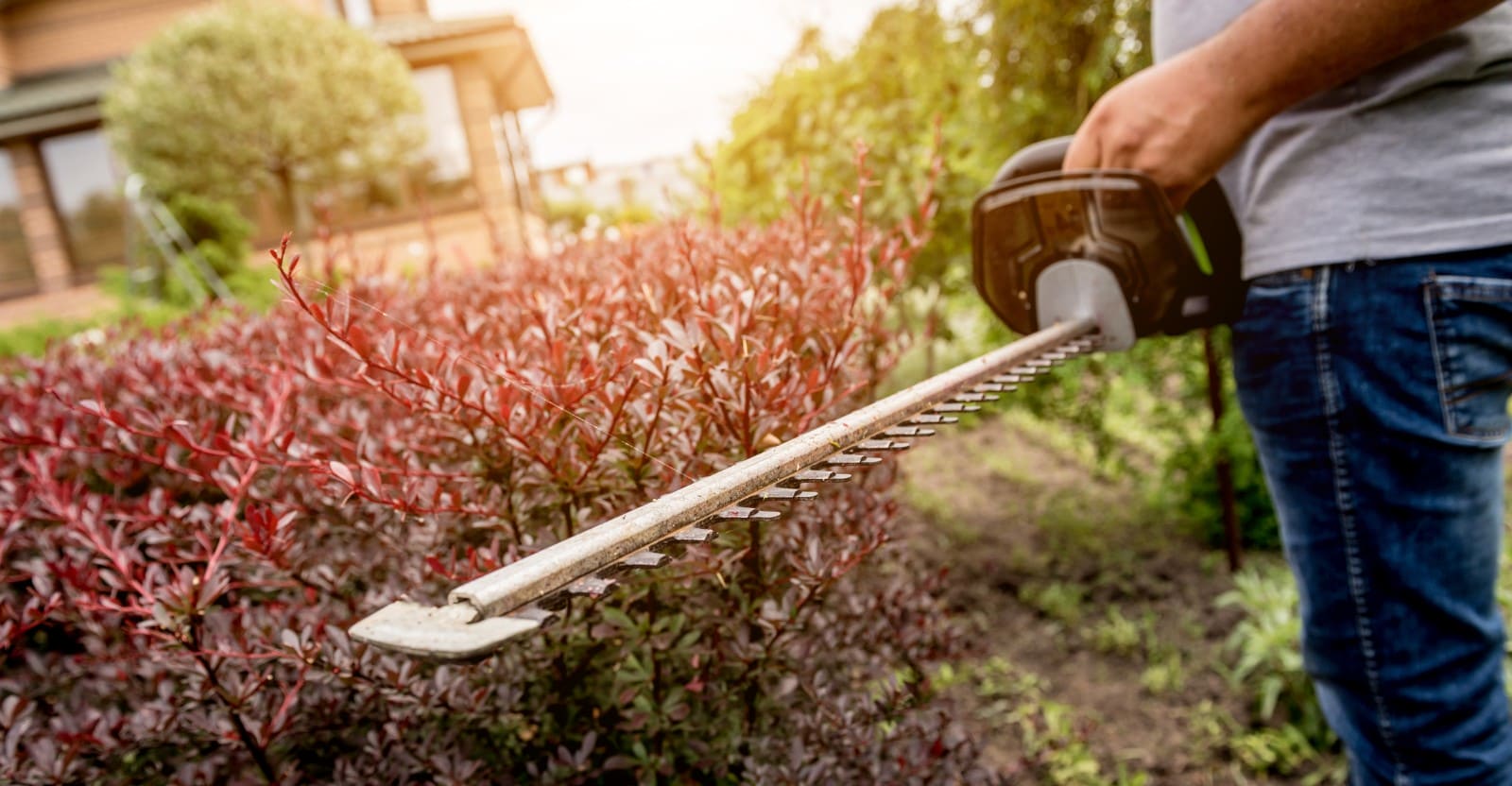Amazon has put together some great Home Gift Deals – save money and get your shopping done at the comfort of your home! Click here to see deals on Amazon
A hedge trimmer is a gardening tool to maintain your yard correctly. It’s a perfect tool to handle landscaping and other gardening tasks.
But after using it a while, the blades of the hedge trimmer start getting dull, and you get jagged and uneven cut on the shrubs and plants.
Hedge trimmer blades must remain to be sharp to get a clean cut. If you want to know how to sharpen hedge trimmers, then follow this handy guide.
We hope this guide will help anyone who needs a quick and effective way to bring new life to their electric hedge trimmers or gas hedge trimmers.
Let’s dive right in.
Should you sharpen the hedge trimmer blade or buy a replacement?
The decision to buy a replacement hedge trimmer blade or sharpen the existing one depends on the condition of the trimmer. For faulty blades such as crack or bend beyond repair, you need to replace them with a newer module.
Monitoring the blade and condition of the trimmer is essential to know when you should replace the module.
Also, consider safety; it may not be most economical to buy the newer blade. Still, if the edge is cracked or damaged somehow, then it may become a significant safety issue.
But what to do if there is no damage to the trimmer blade or any imminent safety issue. In that case, you have to consider if sharpening or repairing the module is worth it.
As a general rule, if the sharpening or repair cost is more than half the price of the newer blade, it makes more sense to buy the replacement blade.
If you can sharpen the hedge trimmer yourself at home or it cost you less than 50 percent of the newer blade, then you should grind it yourself.
The goal is to maximize the value from the tool before you need to spend more money buying a newer blade.
Read More: 7 Lawn Mower Brands to Avoid: Which Should You Buy Instead
What are the benefits of a sharpening hedge trimmer?
Here are some benefits of a sharpening hedge trimmer blade.
Saves Money
Sharpening a hedge trimmer at home or through a repair shop saves you money on buying the newer blade. You can use the saved money to purchase beautiful garden flower seeds or do whatever you wish for.
Tool Last Longer
The sharpened blade cuts more efficiently. It reduces the power needed to perform the job and extends the life of the motor in the hedge trimmer.
Easy Trimming
The sharpened blade in the hedge trimmer gives you cleaner and smoother cuts on the bush and garden shrubs. It also prevents damage to the plant due to rough cuts and allows the plant to heal faster.
Eco-Friendly
When you sharpen the blade yourself, you don’t have to throw it in the landfill and buy the new one. You maximize the use of a trimmer that is also eco-friendly as it reduces waste.

How to sharpen hedge trimmers blade at home
If you have never sharpened the hedge trimmers blade before then, it may look very intimidating. But once you know the proper technique, then it becomes straightforward and easy to do.
There are several ways you can sharpen the trimmer blade. You can do it physically using a file or stone. But if you want to do it more efficiently in less time, then you can use sharpening power tools such as grinder and Dremel to help you with the job.
For maintaining a proper cutting efficiency, you should sharpen the blades after every 50 hours of operation.
Here are some ways to sharpen the hedge trimmer.
Sharpen trimmers with a file
Using a file to sharpen the trimmer is the simplest way to get started. It’s quick and easy and doesn’t need any specialized tool except a sharpening file.
Here are the steps:
Step 1: Place the hedge trimmer at the flat surface, such as a workbench or table where you can get easy access to the blades.
Step 2: Start filing gently in a downward motion first. When you bring the file downward, lift it and again bring it down. Don’t file up and down in a repeating manner as it makes the blade duller and thinner. Lift the file when going up.
Step 3: You may have to do it a couple of times to sharpen the blade. Keep an eye on the edge and check if it looks sharp. Depending on dullness, it may take some time to get the desired sharpness.
Step 4: Once you have finished sharpening all the trimming blades, you can take out the minor rough edges using a sharpening stone.
Sharpen clippers with a stone
You can use a whetstone to sharpen the hedge clippers. Sharp Pebble Premium Whetstone is a reasonably priced and long-lasting sharpening stone. It has non-slip-based and comes with an angle guide that helps maintain a 20-degree angle.
Here are the steps to sharpen with a stone:
Step 1: Clean the trimmer tooth with water and rag damped with soapy water to get rid of any sap and dirt from the trimmer. Wipe it with a dry cloth before you get started with sharpening.
Step 2: Rub the whetstone in a downward motion on a tooth. Maintain a proper sharpening angle (usually 10 to 15 degrees). You can remove any sanding dust while sharpening.
Step 3: Maintain the proper sharpening flow and don’t use too much pressure on the stone. Continue sharpening each tooth until all are uniformly grounded. Remove any uneven edge with stone.
Step 4: Wipe the blade with a damp cloth and use lubricant to reduce friction and prevent rust in the clippers.
Sharpen with a power grinder
The power grinder is one of the fastest ways to sharpen the electric hedge trimmer and other trimmers. But you have to be careful when using a power grinder; otherwise, it may easily break the edge.
Before you start with a power grinder, make sure the area is clean, and there is no nearby combustible material such as fuel.
Here are steps of sharpening the hedge trimmer with a power grinder.
Step 1: Place the trimmer flat on the workbench and secure it with clamps or ask someone to hold the tool firmly while you get ready for the grind.
Step 2: Put on proper protective equipment such as safety glass, face shield, work gloves, and earmuffs. Also, check the direction the spark will be moving. Keep that area free from any combustible materials.
Step 3: Set the comfortable angle on the blade to get easier access to it and lock the edge, so it doesn’t move while you’re sharpening the teeth.
Step 4: Apply gentle pressure on the teeth with a grinding wheel. You should follow the natural downward grinding direction. Don’t shave off more than what you need to sharpen the teeth. You can use a grinding wheel with 60 to 80 grit coarseness.
Step 5: Use a short stroke individually on each tooth. Don’t rush the process, and take your time to sharpen each tooth properly.
Step 6: After you have finished sharpening teeth, check for any burr or skim over the blade. You can use a file or stone to remove these inconsistencies. Check one more time to make sure you didn’t miss any teeth.
Sharpen electric hedge trimmers with Dremel
Dremel is another powered tool that looks like a grinder but has a much smaller grinding wheel. The smaller but precise bit of Dremel gives you more control over the grinding and has a very smooth movement.
Here are the steps to use Dremel for sharpening blades.
Step 1: Make sure the trimmer tooth is free from dirt and debris. You won’t get as much spark as you get using a power grinder but keep the area clear from any combustible material.
Step 2: Then, set up the trimmer firmly on the workbench. Secure it securely, so it doesn’t move while sharpening.
Step 3: Move the fast-rotating Dremel grinding wheels over the trimmer tooth gently. Keep applying light pressure.
Step 4: Use the short strokes on the tooth to get a precise sharpening. Avoid doing a long stroke as it gives you disproportionate sharpening.
Step 5: Remove the burr or any inconsistency from the blade. Use a damp cloth to remove ground metal particles. You can apply 3-in-1 oil to lubricate the blade and prevent corrosion.
Sharpen blades on gas hedge trimmers
The sharpening blades on a gas hedge trimmer are similar to what you would do when using a file. Make sure to empty the gas tank before you get started.
You may have to flip the trimmer upside down for easier access to the blade that increases the risk of spilling gasoline.
To get started, lay flat the trimmer on the workbench and use a flat sharpening file, and guide it along the blade. Follow the angled cut on the tooth when grinding with a file. Lift the file when you bring it up and rub it in a downward direction only.
Make sure you only sharpen the cutting edge. Tilt the trimmer downward, so the bottom of the blade is facing upward. Using a whetstone smoothen the backside of cutting teeth. Make sure you’re only sharpening the cutting edge.
Once finished sharpening, remove the dust and debris from the cutting blade and put on the protective shield. Here is a quick how-to sharpen the hedge trimmer video.
How to clean hedge trimmer blades
A hedge trimmer is a useful tool to maintain trees and shrubs in your yard. It keeps your plant healthy while making it look good.
However, the blades get gunked up with plant residue and saps that make it difficult to trim without cleaning it.
Moreover, the leftover plant residue may cause bacteria to generate that can infect other plants when doing the trimming. This is why it’s vital that you properly clean the blades after each use.
To get started, physically remove any sticking branch or saps from the blade. Rinse the edge with clean water to remove any dirt or debris from the module.
If you still have particles or resins sticking to the blade, you can use a stiff brush or putty knife to scarp the residue. Don’t use a metal brush or sandpaper as it could easily scratch the outer coating on the blade and may cause the module to rust.
You can then use a coarse cloth or rag that you can dip in oil or other cleaning solution and wipe the blade to remove any sticky sap.
Once cleaned, use a soft dry cloth to wipe the blade. You can also sterilize the blade by rubbing alcohol or mixing bleach with water.
Leave the blade for 30 to 60 seconds before you wipe it with a dry cloth. If you’re storing the trimmer, you can use a 3-in-1 solution that lubricates the blade and prevent it from rusting.
Where to find the replacement blades
If the trimming blade is old and beyond the need for sharpening, then you may have to replace the module. The replacement blade depends on the make and model of the hedge trimmer.
You may have to look for the part number on the blade to get the correct part. You can buy it from online stores such as Amazon or order it through primary homes hardware retailers such as Home Depot, Lowes, and Rona.
You can buy the replacement blades for most major brands such as Black and Decker Hedge trimmer replacement blades, Echo hedge trimmers, Stihl hedge trimmers, Craftsman hedge trimmers, and Ryobi cordless hedge trimmers.
How to adjust hedge trimmer blade
There may be several reasons you have to adjust the blades. A misaligned blade may cause the twigs to get caught in the module or cut unevenly.
You can adjust the blade depending on how improper cuts you get. If you have branches getting caught in the module, then it means the upper and lower edges are loose or become detached. Most of the time, it happens due to wear or damage caused to the blade.
If there is any slight bent on the blade, then you can use a mallet and hammer it lightly to make the edge straight. If the separation is due to excessive wear on the blades, then you have to order a replacement part.
For trimmer that cuts unevenly and frayed means, the tooth has become dull, and you need to resharpen it. You can follow the above sharpening methods on any trimming blade.

How much does it cost to sharpen hedge trimmers
If you don’t want to sharpen the blades yourself, then you have to bring it to the home hardware or local mechanic shop. The prices vary a lot, and it depends on the location and area you live in.
If you’re not sharpening yourself, then the best bet is to bring the trimmer to the local hardware store. If your trimmer is still under warranty and you have purchased it from them, then they may offer to sharpen it free or do it under the nominal price of $10 to $15.
Some local machine shops can do it at a cheaper rate and even fix minor damage such as bent or kinks for a nominal price. If you’re looking for a hedge trimmer sharpening nearby, then you can use Google Maps for suggestions.

Don’t forget to share this post







